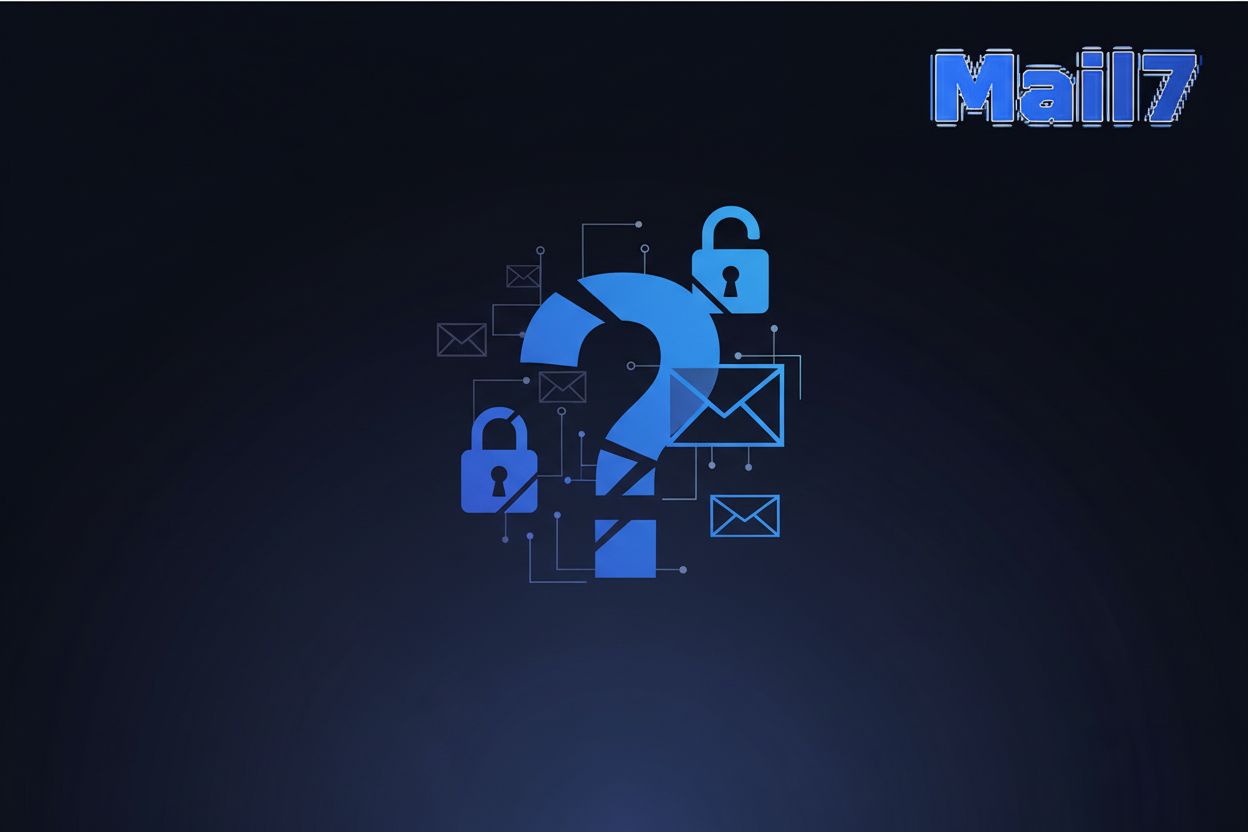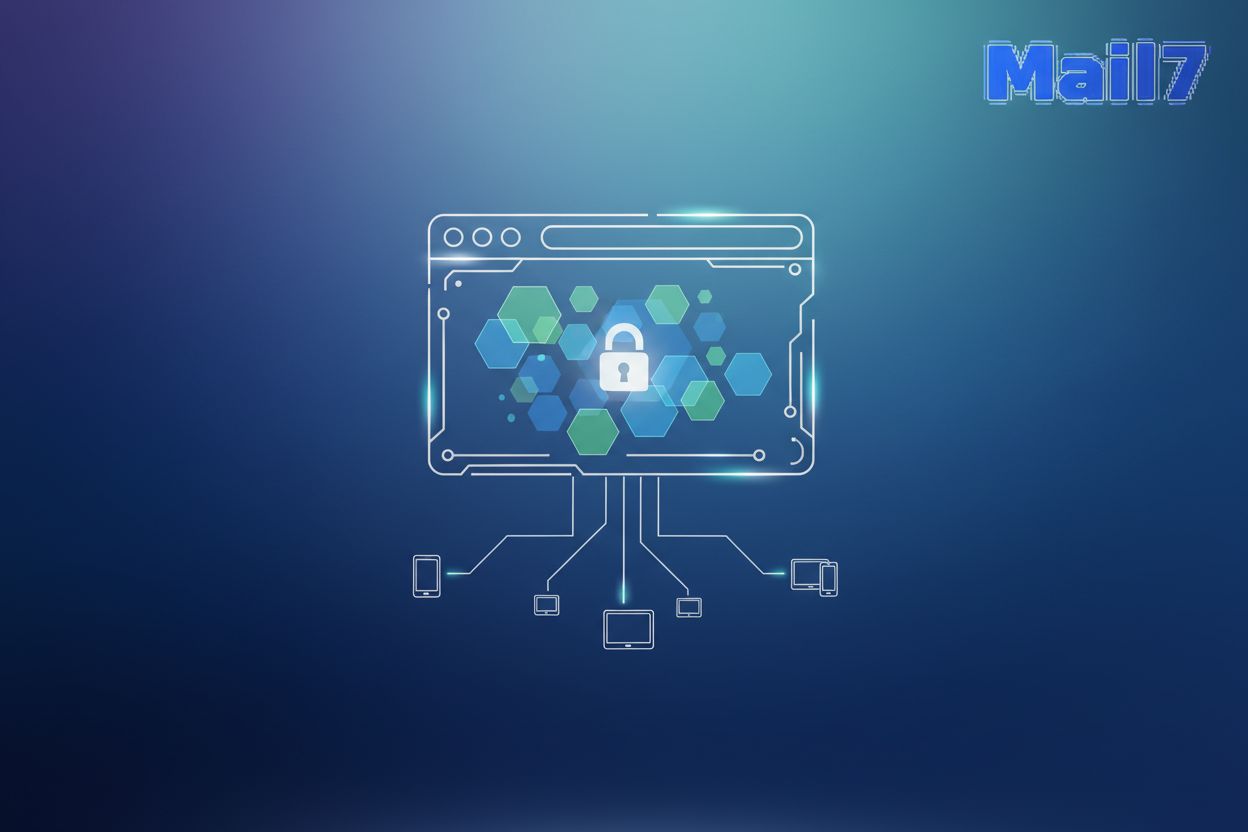Can Disposable Email Addresses Be Tracked?
TL;DR
Understanding Disposable Email Addresses
Okay, so you're probably wondering, what's the deal with these weird email addresses that disappear? Let's dive in, because disposable email addresses (DEAs) are way more common than you might think!
Essentially, a disposable email address is a temporary email address you can use instead of your real one. Think of it like a burner phone, but for your inbox. The main purpose? Avoiding spam, mostly.
- People use them for all sorts of things. Like signing up for newsletters they're not really interested in, or testing out a website without committing their primary email to potential spam. Gamers might use it for a quick tournament sign-up. A healthcare startup might use it to test their user onboarding flow. It's pretty versatile.
- The benefits are obvious: you keep your real inbox clean, prevent tracking and protect your privacy. But, there are drawbacks. You might miss important updates if you forget you used a DEA for a particular service. Plus, some sites just straight-up block them now. Awkward.
- For example, imagine you're a retail enthusiast signing up for flash sales. Instead of giving out your primary email, you use a DEA. This keeps your main inbox free from endless promotional emails, but ensures you still catch those limited-time offers.
There's a whole ecosystem built around DEAs. (When Nonprofits Hit a Crisis, We Help Them Refocus - Instagram) There are tons of providers offering these services, some are free, some are paid.
- Free temporary email services are super common and easy to find. They usually offer a basic, no-frills experience. You visit their site, get an email address, and it works for a short while. Think of services like Temp-Mail or Guerrilla Mail – great for quick sign-ups where you don't expect any follow-up.
- Paid services, on the other hand, often come with more features. These might include custom domains, longer email lifespans, more robust forwarding options, and better support. Services like AnonAddy or SimpleLogin offer more control and reliability, often used by individuals who want to manage multiple aliases or protect their primary inbox more seriously.
- Creating and managing a DEA is usually straightforward. You visit the provider's website, generate an address, and use it as needed. Some services even let you create multiple addresses and manage them from a single dashboard. Imagine a qa engineer needing to test multiple user signups on a new platform - DEAs make this easy.
- Trends in DEA usage? It's definitely growing. More people are becoming aware of privacy issues and spam overload, so they're turning to DEAs as a quick fix. User demographics are pretty broad, ranging from tech-savvy individuals to those just looking for a little extra online security.
Now, here's where things get interesting – how do DEAs affect businesses? Not always in a good way, tbh.
- DEAs can seriously mess with email deliverability and sender reputation. If a large number of emails sent to a particular domain bounce (because the DEA is dead), it can flag the sender as a spammer. This is a real problem for email marketers.
- Data quality takes a hit too. Companies end up with inaccurate analytics because many of these addresses are used for fake accounts or one-time sign-ups. It throws off their metrics and makes it harder to understand their actual user base.
- Lead generation and conversion tracking become a nightmare. How do you nurture a lead when you don't even have a real email address? It's like trying to build a relationship with a ghost.
So, can these disposable emails be tracked? That's the million-dollar question, and we'll get into that next. It's a complex topic, and understanding the methods is crucial for businesses looking to maintain data integrity and effective communication.
Methods for Tracking Disposable Email Addresses
Alright, so you're probably wondering how to actually find these sneaky disposable emails, right? It's not always easy, but there's definitely a few tricks up our sleeves. Turns out, businesses and developers are getting pretty clever about sniffing these things out.
One of the most straightforward methods is using domain blacklists. These are basically lists of known disposable email domain names. Think of it like a "naughty list" for email addresses.
- There's both public and private blacklists. Public ones are often community-maintained and free, but they might not be super up-to-date. Private blacklists are usually more comprehensive, but you gotta pay for access. A security firm, for instance, might use a private blacklist to block sign-ups from known DEA domains to prevent fraudulent accounts.
- You can also identify DEA providers directly via api lookups. Several services offer apis that can tell you if an email domain is a known DEA provider. This is super useful for real-time validation. Say you're running an e-commerce platform; you can use an api to check if a new user's email is disposable before they even create an account. An API (Application Programming Interface) is essentially a set of rules and protocols that allows different software applications to communicate with each other. In this case, your system sends an email address to the API service, and the API service checks its database of known DEA providers and sends back a response indicating whether it's a DEA or not.
- However, blacklist-based approaches aren't perfect, tbh. DEAs are constantly popping up, so blacklists can quickly become outdated. Plus, some DEA providers use rotating domains to evade detection. It's a bit of a cat-and-mouse game.
Beyond just blacklists, you can use pattern recognition to spot DEAs. This involves looking for specific characteristics in email addresses that are common among disposable ones.
- Things like unusually short usernames, weird character combinations (like lots of numbers or symbols), or generic domain names can be red flags. Imagine an email like "[email protected]" – pretty sus, right? A social media platform, for example, might flag accounts with such emails for further review.
- Analyzing domain names for suspicious characteristics is another angle. Domains that are very long, have random strings of characters, or use unusual tlds (top-level domains) might be DEAs. A financial institution might be extra cautious about users signing up with domains like "jkh34kjh.com".
- More advanced companies are even using machine learning models to detect DEAs. These models are trained on tons of data to identify patterns and characteristics that are indicative of disposable emails. This is particularly useful for detecting new or less obvious DEAs that haven't made it onto blacklists yet. For instance, a model might be trained on features like username length, the presence of numbers or special characters, domain age, and historical usage patterns associated with known DEA domains. It could then predict the probability that a new email address is a DEA.
Another way to track DEAs is by looking at ip addresses. Where the email originated from can give you clues.
- Tracking ip addresses associated with DEA creation can reveal patterns. If a large number of DEAs are being created from the same ip address or range of addresses, it could indicate automated or malicious activity. An online forum, for instance, might use ip tracking to ban users who are creating multiple accounts with DEAs to spam the forum.
- Geolocation can also be helpful. If a user claims to be in one location but their ip address indicates they're in another, that's a red flag. Combining ip analysis with other tracking methods, like email pattern recognition, can give you a more complete picture.
- It's important to note that ip analysis isn't foolproof. Users can use vpns or proxies to mask their real ip addresses. But it's still a valuable piece of the puzzle.
Finally, there's email verification services and api integrations. These are probably the most reliable way to detect deas in real-time.
- These services use a variety of techniques, including blacklist lookups, pattern recognition, and ip analysis, to determine whether an email address is valid and not disposable. They can also check if the email address is associated with a known spammer or botnet.
- Real-time email validation is key here. You want to be able to check the email address as soon as the user enters it into your signup form. This prevents them from even creating an account with a DEA in the first place.
- Integrating these verification services into your signup forms and email workflows is relatively straightforward, especially if they offer an api. Speaking of which, Mail7 offers a Disposable Email Testing api for developers. Ensure fast and reliable email delivery with enterprise-grade security and encrypted communications. Our developer-friendly rest api comes with comprehensive documentation and unlimited test email reception. Mail7
So, yeah, there's a bunch of ways to try and catch these disposable emails. It's an arms race though, honestly. As detection methods get better, so do the techniques for evading them.
Next up, we'll dive into the limitations of these methods and how to balance tracking with user privacy.
Limitations and Challenges of DEA Tracking
Okay, so, tracking disposable email addresses? It's not as easy as those spy movies make it look. There's a bunch of limitations and challenges that companies run into. And honestly, it's kinda like a game of whack-a-mole sometimes.
One of the biggest problems is how quickly DEAs are changing. New providers pop up all the time, and they're constantly finding new ways to get around detection.
- It's like, as soon as someone figures out a way to block a certain type of DEA, a new one emerges with a different domain or a slightly tweaked pattern.
- Some providers even use rotating domains. This means they'll use a domain for a short period, then switch to a completely new one. They might also use a large pool of domains that they cycle through. This makes it super difficult to keep a blacklist up-to-date because by the time you've added a domain to your blocklist, they've already moved on to another. Imagine trying to secure a healthcare platform when users can create new, untraceable emails every few minutes.
- This constant back-and-forth means that tracking DEAs is an ongoing battle. It requires constant vigilance and adaptation. It's an arms race, to put it mildly.
Another big issue is accuracy. You don't wanna block real people by mistake.
- There's always a risk of flagging legitimate email addresses as disposable, which can be a major headache for users. Imagine a retail customer trying to sign up for a loyalty program and getting blocked because their email looks suspicious. Super frustrating!
- False positives can damage user experience and even drive away potential customers. No one wants to jump through hoops just to prove they're not a bot.
- Minimizing false positives requires a delicate balance. You need to be aggressive enough to catch DEAs, but not so aggressive that you're blocking real users. It's a tough call, honestly.
And then there's the whole privacy thing. Can't just go snooping around willy-nilly.
- Tracking DEAs raises some serious privacy concerns. You have to balance your efforts to prevent abuse with the need to respect user privacy.
- Complying with data protection regulations like gdpr and ccpa is crucial. You can't just collect and store data without telling people what you're doing with it.
- Transparency and user consent are key. People need to know that you're tracking DEAs and why. For example, your privacy policy should clearly state that you use email verification services to detect disposable email addresses and explain the purpose (e.g., to prevent spam and fraud). During signup, you could have a clear checkbox that users must tick, indicating they understand and agree to this practice. A simple statement like "We use email verification to ensure account security and prevent spam. Your email will be checked against a database of known disposable email providers." can go a long way.
So, yeah, tracking DEAs is tricky business. It's not just about the technology, it's also about accuracy and people's privacy.
Next, we'll explore how to strike a balance between tracking DEAs and respecting user privacy.
Strategies for Mitigating the Impact of DEAs
Okay, so you've been working hard to keep DEAs out of your system, but what if you could, ya know, just make people want to use their real emails? Sounds kinda backwards, but hear me out.
- Offering incentives for using real email addresses is surprisingly effective. Think about it; everyone loves a good deal.
- Offering discounts, exclusive content, or early access to features can motivate users to provide their primary email. A gaming company, for instance, could offer in-game bonuses or exclusive skins for users who verify their real email addresses. It's a win-win.
- For example, an e-commerce site might offer a small discount on the first purchase for users who sign up with a verified email. It's a simple, but effective way to encourage real email usage.
- To ensure the email is "real," you absolutely need to implement an email verification process. This typically involves sending a confirmation email to the address provided. The user must click a link in that email to confirm they have access to it. This step is crucial to ensure it's not another DEA.
- Providing valuable content and services is another key strategy. If you're giving users something they actually want, they're less likely to use a DEA.
- Think exclusive webinars, in-depth guides, or personalized recommendations. A financial services company could offer a free financial planning guide in exchange for a real email address. The key is to offer something that's genuinely useful and relevant to your audience.
- Also, consider a healthcare provider offering a free telehealth consultation for new patients who sign up with their real email. This not only encourages real email usage but also provides a valuable service.
- For different businesses, the incentives can vary. A SaaS company might offer extended free trials or access to premium features. A content creator could offer early access to new videos or exclusive Q&A sessions. A B2B service might offer a free consultation or a demo of their product. The key is to tailor the incentive to what your target audience values most.
- Building trust with users is crucial. People are more likely to share their real email address if they trust you to protect their data and not spam them.
- Be transparent about how you'll use their email address and what kind of content they can expect. Make it easy for them to unsubscribe if they no longer want to receive your emails.
- A retail company, for example, could highlight its commitment to data privacy and security during the signup process. Showing that you care about their privacy can go a long way in building trust.
- Many organizations are now using privacy-focused messaging during signup to build trust.
Imagine a small online education platform struggling with low engagement rates. They decide to offer a free premium course module to users who verify their real email addresses. Engagement shoots up, and they see a significant increase in course completion rates.
So, you see, sometimes the best way to combat DEAs is to not combat them directly. Instead, focus on making your offering so valuable that people are willing to give you their real email. It's kinda like reverse psychology, but with better results.
Conclusion
Disposable emails: are they a pain, or just a fact of life? Honestly, it's a bit of both. As we've explored, tracking DEAs is possible, but it's definitely not a perfect science.
DEA usage is always changing, so staying ahead is key. New services pop up all the time, and they get smarter at avoiding detection. What works today might not work tomorrow. You have to keep learning and adapting.
Advancements in tracking tech are helping, though. Things like ai and machine learning are making it easier to spot patterns and identify new DEA providers. But, again, the other side isn't standing still either.
Adaptive strategies are a must. You can't just set it and forget it. Regularly review your methods, update your blacklists, and tweak your algorithms. It's an ongoing process.
Best practices include a mix of technical solutions and user-friendly approaches. Use email verification apis (as Mail7 offers, as mentioned earlier), but also offer incentives for real email sign-ups, like exclusive content or discounts, and that's a fact.
Balancing tracking with user experience is important. You don't want to be so aggressive that you're blocking legitimate users or scaring people away. Transparency and clear communication are key.
Continuous improvement is essential. There's no silver bullet. Stay informed about the latest trends, experiment with new techniques, and always look for ways to improve your approach. Because if you don't, your emails may never reach their intended audience.





